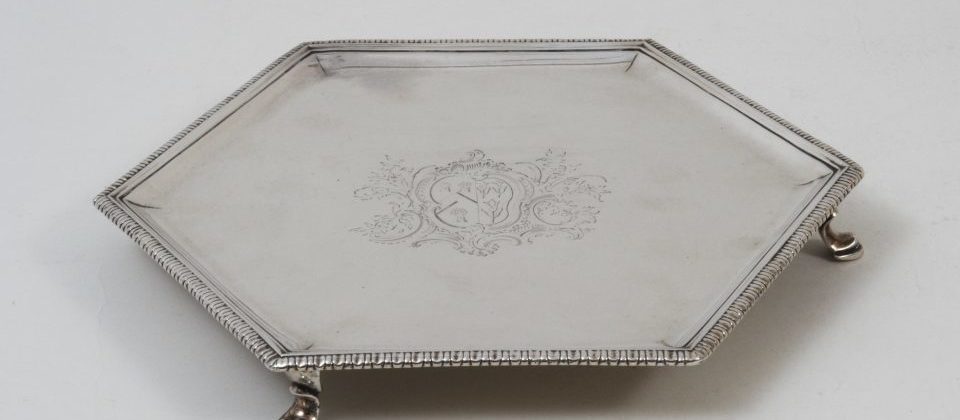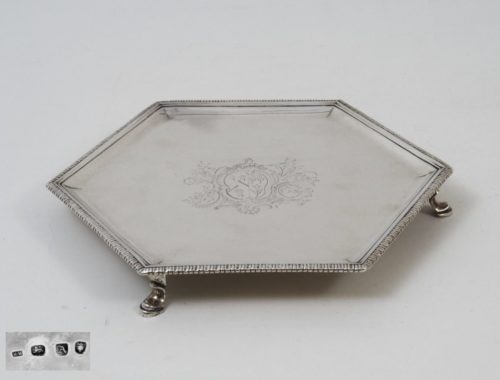Detailed Information
Antique Silver George II Hexagonal Salver on Three Hoof-Feet
This antique silver George II salver has a hexagonal form and is raised on three cast hoof-feet. The rim is profiled and adorned with a lamb’s tongue frieze. In the middle of the mirror, an engraved coat of arms in an elaborated rococo cartouche with wavy scrolls (rocailles) and floral forms.
According to an old eating custom, important people and guests were served by using an offering salver. These kind of presentation dishes were the ancestors of later pieces of this style. Salvers and tazze were used in France for the ritual of the “levée” as well as an accessory for the toilet services. In England, they were also used for the tableware but as well for presenting letters.
The often-smooth surface of the mirror was particularly suitable for bringing up engravings, mostly coat of arms and crests. These salvers took during the eighteenth century many different forms – oval, hexagonal or octagonal, etc.
Maker
Richard Rugg was son of Richard Rugg of Limington and apprenticed to James Gould since 1738 of payment of 25 pounds. He became a master maker on September 1746. His first mark entered as largeworker in 1754. He died between 1795 and 1801.
Literatur
Grimwade, Ar., London Goldsmiths 1697-1837. Their marks and lives from the original registers at Goldsmiths’ Hall and other sources, GB: Faber and Faber, 1990 [Grimwade3]
Hernmarck, Carl, Die Kunst der europäischen Gold- und Silberschmiede von 1450 bis 1830, C.H. Beck Verlag: München, 1978
Jackson, Ch., J., English Goldsmiths and their marks, London: MacMillan and Co. Limited, 1921



